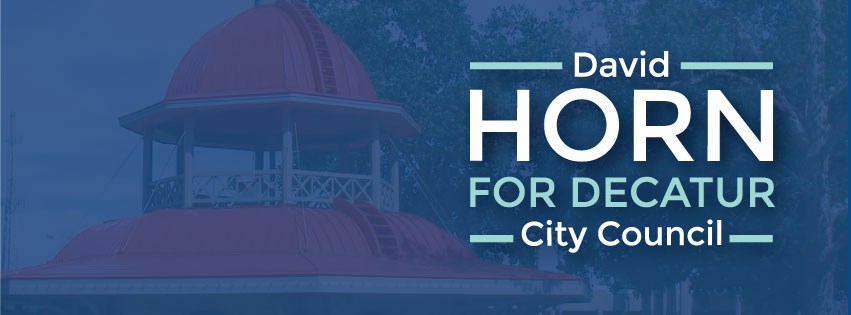
Delipidated buildings are a public safety threat. Their removal revitalizes neighborhoods and promotes economic development
One of the most heinous homicides in Decatur’s recent history took place in a boarded up building last year. Delipidated buildings are targets of arsonists, harbor drug activity, serve as hiding places for contraband, provide homes for nuisance animals, and bring surrounding property values down. Unequivocally, Decatur must do more to ensure that the large number of blighted properties in the city are removed quickly. To that end, the Decatur City Council will consider spending $1.7 million to demolish the former Durfee Elementary School at Jasper and East Grand and the former Centennial/Coppenbarger School at East Condit and North Woodford at its next meeting on April 15. City staff are suggesting that funds from the city’s “Special Projects Reserve Fund” be used to pay for the demolitions.
REMOVAL OF BLIGHTED PROPERTIES IS A PUBLIC SAFETY ISSUE AND AN ECONOMIC DEVELOPMENT OPPORTUNITY
Both national studies and local examples demonstrate that reducing blight reduces crime. For example, Decatur received a $1.25 million grant in 2020 to fund demolitions, cleanups, and lot acquisitions in the Johns Hill Neighborhood. This donation was a critical first step in transforming the neighborhood, and the neighborhood has seen a 36% reduction in the count of offenses in July-June 2022-2023 vs. July-June 2018-2019.
Despite demolishing 208 properties from 2021-2023, Decatur continues to have unacceptably high levels of blight. For example, of the 18 neighborhoods within the city’s urban core, 11 have blight scores over 0.25 (a blight score represents a probability that a house will have some characteristic of blight such as a broken window, faulty roof, etc. A blight score of 0.25 corresponds with a 1 in 4 probability of a property showing a sign of blight). As of February 2024, city staff estimate that there are between 4,000-5,200 vacant properties in the city and of those properties between 500-1,000 may be at risk.
There are few people or businesses that want to move next door to a blighted, at-risk property. Thus, if the city wants to attract to new people to the city, blight removal should not only be viewed as an improvement to public safety, but also as an infrastructure enhancement in a similar manner to improvements in roads, water, sanitary sewer, and storm sewer infrastructure. Furthermore, removing blighted properties can be an economic incentive for companies to move to Decatur, as demonstrated by the removal of a blighted structure in what is now the Tillamook ice cream plant facility.
The city council can also be more proactive. Earlier this year, the city council passed an at-risk property registration ordinance that requires owners of vacant properties to register based on whether they have a property code violation. To prevent buildings from becoming delipidated, the city could require universal business licensing which would involve periodic inspection of large structures. While this idea has been known to the council for months, it has yet to be placed on the city council agenda.
MORE FUNDING FOR WATER PROJECTS AND ACTION TO PROTECT LAKE DECATUR WATERSHED TO BE VOTED ON
Another topic the city council will discuss and likely vote on is issuing a $36.8 million in general obligation bonds which would both finance water system infrastructure improvements and redeem general obligation bonds issued in 2014 and 2015. This will allow the city to save between $1.2 - $1.8 million in interest and provide the city with an additional $5.3 million for water projects. Combined with the $20 million bond issued prior to this year, the city has now accumulated over $25 million in water funding for projects most of which have not been approved by the city council at this point.
The city council will also likely authorize $1.7 million of its nearly $10 million Regional Conservation Partnership Program grant for administration of 6 programs throughout the Lake Decatur Watershed. While I am very supportive of the planning and programs taking place in the watershed, the reality is that years after Lake Decatur has been dredged, and after over $1 million has already been spent on watershed planning, the city has barely made an impact in the amount of sediment continuing to accumulate in Lake Decatur on an annual basis. Ironically, much of the $25 million in water bond funding discussed above may go to projects to increase water supplies, while the volume from the city’s largest supply of water, Lake Decatur, continues to decrease.
PLEASE EXPRESS YOUR VIEWS AT THE NEXT CITY COUNCIL MEETING
The next city council meeting will take place on Monday, April 15 at 5:30 PM in the council chambers located on the third floor of the Decatur Civic Center (1 Gary K. Anderson Place). Free parking is available in the lot immediately south of the entrance. Citizens are encouraged to attend meetings and express their views. Citizens are allotted 3 minutes per person near the beginning of each city council meeting. In addition, citizens can provide comments regarding one regular agenda item per meeting for up to three minutes provided they notify the city in advance (and prior to the start of the meeting). You can request to speak on a particular agenda item at a council meeting by filling out an on-line form at: https://www.decaturil.gov/mayor-and-council/advance-request-to-speak-at-council-meeting/.
AGENDAS FOR CITY COUNCIL MEETINGS ARE AVAILABLE ONLINE
An agenda and information about each agenda item for each city council meeting can be found at: https://www.decaturil.gov/mayor-and-council/council-meetings/.
CITIZENS ARE ENCOURAGED TO PROVIDE FEEDBACK TO CITY COUNCIL MEMBERS
If you would like to discuss city issues with a council member, phone numbers and email addresses for each council member can be found at the following link: https://www.decaturil.gov/mayor-and-council/council/.
